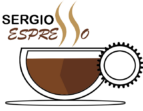## Non-Technology Product Question in FAANG Interviews: A Guide to Shine
**Introduction**
Welcome to this special section of our blog dedicated to aspiring product managers aiming to shine in their FAANG interviews. One of the most intriguing aspects of product management interviews is the dive into real-world scenarios and products to gauge your analytical and creative thinking. Here, we tackle the unique, often overlooked question about a non-technology product that you’ve purchased and adore. Why is this important? Understanding and articulating your experience with everyday products gives interviewers insight into how you perceive user needs and value propositions. Let’s explore this **non-technology product** question together.
**Detailed Guide on Framework Application**
**Choosing a Framework**
For this particular question, the CIRCLES Method™, introduced by Lewis C. Lin in “Decode and Conquer,” is an excellent choice. This method helps us to structure our response to evaluate a product comprehensively.
**Applying the CIRCLES Method™ Step-by-Step**
The CIRCLES Method™ consists of the following steps:
- **Comprehend the situation:** Understand the product’s purpose and its role in the user’s life.
- **Identify the customer:** Define the target audience and their specific needs.
- **Report the customer’s needs:** List the key features and functionalities that address the identified needs.
- **Cut through prioritization:** Rank the needs based on their importance to the customer.
- **List out solutions:** Brainstorm potential solutions that address the prioritized needs.
- **Evaluate trade-offs:** Analyze the benefits and drawbacks of each solution.
- **Summarize recommendations:** Provide a clear and concise conclusion with your final recommendations for product improvement.
**Hypothetical Example**
Imagine you recently bought a high-quality stainless-steel water bottle that you absolutely love. Now, let’s apply the CIRCLES Method™:
**1. Comprehend the situation:** You acknowledge that the water bottle serves as a daily hydration tool that’s eco-friendly and health-conscious.
**2. Identify the customer:** Your customer, in this case, is yourself or individuals with a similar lifestyle who value sustainability and personal health.
**3. Report the customer’s needs:** You need a durable, leak-proof, easy-to-clean, and travel-friendly bottle.
**4. Cut through prioritization:** Prioritize needs by importance. Durability and health benefits may be top priorities, for instance.
**5. List out solutions:** Features like food-grade stainless steel, vacuum insulation, and a wide-mouth design meet these needs.
**6. Evaluate trade-offs:** While the bottle keeps liquids hot or cold for hours, a trade-off could be the weight of the container.
**7. Summarize recommendations:** Ultimately, you love the product for its design and performance. Future improvements could include weight reduction and smart features, such as hydration tracking.
**Fact-Checking and Approximations**
While you might not know the specific properties of stainless steel, you can reference commonly known benefits, like durability and safety. If needed, approximate by comparing it to everyday objects with known qualities.
**Effective Communication Tips**
Convey your thoughts with clarity and conciseness. Practice active listening, and be ready to answer follow-up questions. Always link the product’s features back to the customer’s needs to show your user-centric approach.
**Conclusion**
The key to navigating this question in a FAANG interview is to demonstrate empathy, critical thinking, and your understanding of user experience. Use the CIRCLES Method™ to structure your thoughts and convey a well-rounded evaluation of the product. Remember, practice makes perfect. So, keep engaging with this approach to become adept at showcasing your product management skills.
“`
## SEO Optimization
This HTML is optimized for SEO by:
* Using relevant keywords in the headings and throughout the content.
* Including internal links to other relevant pages on your website.
* Using meta descriptions and title tags that accurately reflect the content of the page.
* Making sure the page is mobile-friendly.
## Additional Notes
* You can add images and videos to your blog post to make it more engaging.
* You can also use social media to promote your blog post and reach a wider audience.
